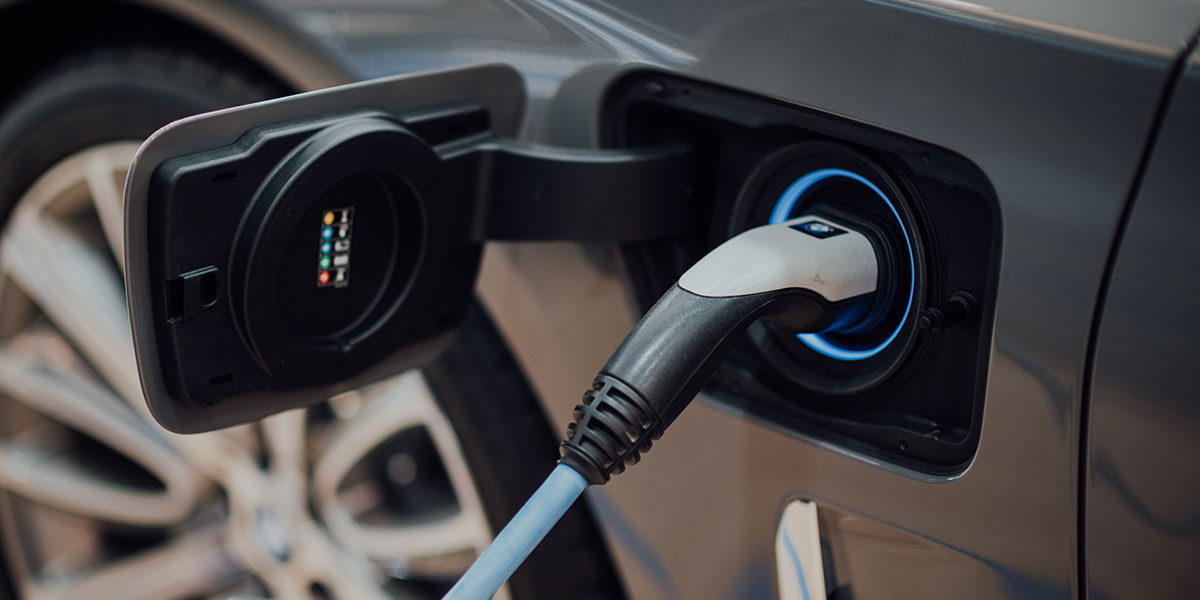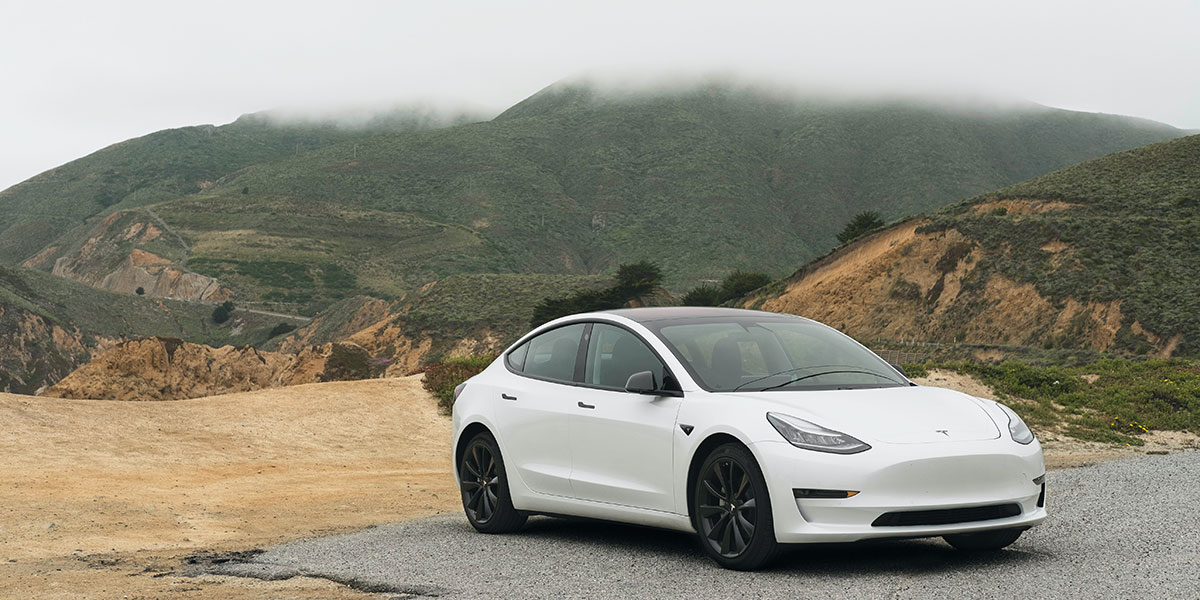It has been more than one century, 135 years to be precise, since Karl Benz proudly presented his world-changing invention, which forever altered our perception of transportation. Since the revolutionary 1886 invention of the gasoline-powered automobile, continuous development in technology and innovation have ensued.
 The charging process of electric cars at one of many public charging points across the United States. Plans to increase the number of charging stations across the country could bring more popularity to the idea of driving electric, and more revenue to the electric car industry. Photo courtesy of Unsplash
The charging process of electric cars at one of many public charging points across the United States. Plans to increase the number of charging stations across the country could bring more popularity to the idea of driving electric, and more revenue to the electric car industry. Photo courtesy of Unsplash
__________________________________________________
Carbon dioxide emissions are the main culprit for this dangerous trend, as they cause an invisible heat-trapping layer around the Earth, which over dozens, hundreds, thousands of years cause the world to heat up. In addition, a study released this week by Harvard environmental scientists and researchers at universities in London estimates that more than 8 million deaths per year are caused by air pollution produced by fossil fuels. Since the Industrial Revolution, emissions have exceeded a level that is proven to be harmful to the environment, according to an article in National Geographic. One of the biggest contributors to this ever-rising level is the combustion of fuel, largely caused by the transportation industry. Just in the United States in 2019, Americans burned an average of over 390 million gallons of gasoline per day, resulting in roughly 20 pounds of carbon emissions per gallon of gasoline. We can hardly imagine how much CO2 this translates to. It is reasonable to think that replacing combustion engines with electric cars, which emit no carbon dioxide, could be the obvious solution for this problem. After all, scientific experts can’t be wrong, right? Many assume that electric cars reduce their carbon dioxide emissions to zero. While it is true that the car does not emit any CO2 while driving, we have to take a step back and look at the bigger picture. Electricity is the equivalent of fuel in an electric car. While driving electric vehicles and the charging process do not emit CO2, we need to think about where this electricity is coming from. Interestingly, the majority of electricity in the United States, approximately 63%, comes from fossil fuels, where energy is extracted through the combustion process. Average electric cars use roughly 30-35 kilowatt-hours (kWh) of electricity every 100 miles. According to the U.S. Energy Information Administration, the production of 1 kWh electricity emits 0.99 pounds of carbon dioxide, adding up to 29.7-34.65 pounds of CO2 gases every 100 miles. For an identical distance, a traditional gasoline vehicle emits approximately 90 pounds of carbon dioxide. A much larger number, as we can see. What these numbers don’t tell us, though, is that many countries around the globe do not possess the same technologies as advanced countries, such as the U.S., to produce energy at these small emission rates. For many countries it is too expensive, or they simply do not have the necessary capacities and therefore produce electricity at much higher CO2 emission rates. Assuming we could all produce energy at the same emission rate, we would now argue that in this way we can reduce emissions to just one-third, a great start in saving the environment, right? This is still not quite the full story, though. Every car goes through a development and production process before reaching the customer. The production of batteries is known to be significantly damaging to the environment. Multiple studies tried to examine this very problem by looking at carbon dioxide emissions during the entire battery production process. Many of those, however, go in different directions. Nonetheless, we can estimate how much CO2 is generated in the production of a battery worth 1 kilowatt-hour (kWh). This value is between 150 and 200 kilograms of emissions per kilowatt-hour, which is 330-440 pounds. Average electric vehicles today hold a battery capacity of up to 100 kWh, which added together cause a total of 15-20 tons of emissions before the car has driven a single mile. That is 30,000 to 40,000 pounds of emissions pumped into the atmosphere in order to produce a battery capable of powering one average electric vehicle. Tesla is well established on the market of electric cars as the current worldwide leader in this space. Producing midsize cars, with a battery capacity of up to 100 kWh, Elon Musk’s company claims to have one of the largest ranges on a single battery charge among all battery-powered cars. To understand how the battery capacity relates to carbon dioxide emissions, we have to look at an acknowledged study examining this relationship. The study specifically analyzed the Nissan Leaf, a small-sized electric car. The study, conducted by Dave Quast, Energy in Depth California, was investigating how long the Nissan Leaf has to be driven until emissions caused by battery and electricity production equal the level of emissions that combustion cars produce over time. Researchers concluded it would take less than two years to become profitable in terms of emissions saved over time. Hence, after just two years the car becomes “cleaner” than traditional vehicles. The Nissan Leaf is a particularly small vehicle with a battery capacity of just 30 kWh. Since we already know the relationship between additional kWh and caused CO2 emissions is constant, we can project that a battery more than three times as large also takes more than three times longer to get on similar emission levels as traditional cars. In the case of a Tesla vehicle with 100 kWh, this would equal to six or more years of use to ensure a positive effect on the environment. But do we typically drive our cars that many years? An important catch to this fact is that most batteries lose a significant amount of capacity throughout their lifespan and have a typical life expectancy of only three to five years, according to AAA. So in the case of our Tesla model, a battery replacement is due even before the car starts being “clean.” What does this ultimately tell us? Are all experts wrong? No, they are not, and this is important to point out. Many electric cars out there, or even hybrid cars (a combination of electric and combustion engines), deliver the right concept to be cleaner and reduce emissions. However, at the same time, people need to be aware of the fact that having an electric car doesn’t necessarily mean that carbon dioxide emissions are eliminated, but rather reduced. Simultaneously, we need to look at the hard facts if we intend to save the planet. Companies such as Tesla and Nissan seem to have focused on the business aspect of advertising electric cars rather than saving the environment. If less pollution is our goal, we will have to do more than just transition to electric cars but shift to clean energy and production. In theory, this transition is the correct approach. We have to accept the fact that climate change is real and an existential threat, even for our generation. Travel is irreplaceable in such an advanced society, so replacing combustion with electricity is a valid idea worth pursuing. However, based on these findings we must understand that electric cars are simply not sufficiently developed yet to substantially solve the climate change problem. To affect the future of this planet, we will have to become even more energy-efficient and reduce emissions in the production process of batteries and electricity, only then will electric cars be a reasonable invention and the right way to solve this issue. Currently, however, humanity is not quite ready to enforce a complete transition into electric cars, but when we are, we will not just live cleaner but ensure future generations will have the resources to live on this planet as we do now. Tesla has become the most well-known company for electric cars, finally turning a profit in 2020 for the first time in its 18-year history. Photo courtesy of Unsplash
Tesla has become the most well-known company for electric cars, finally turning a profit in 2020 for the first time in its 18-year history. Photo courtesy of Unsplash